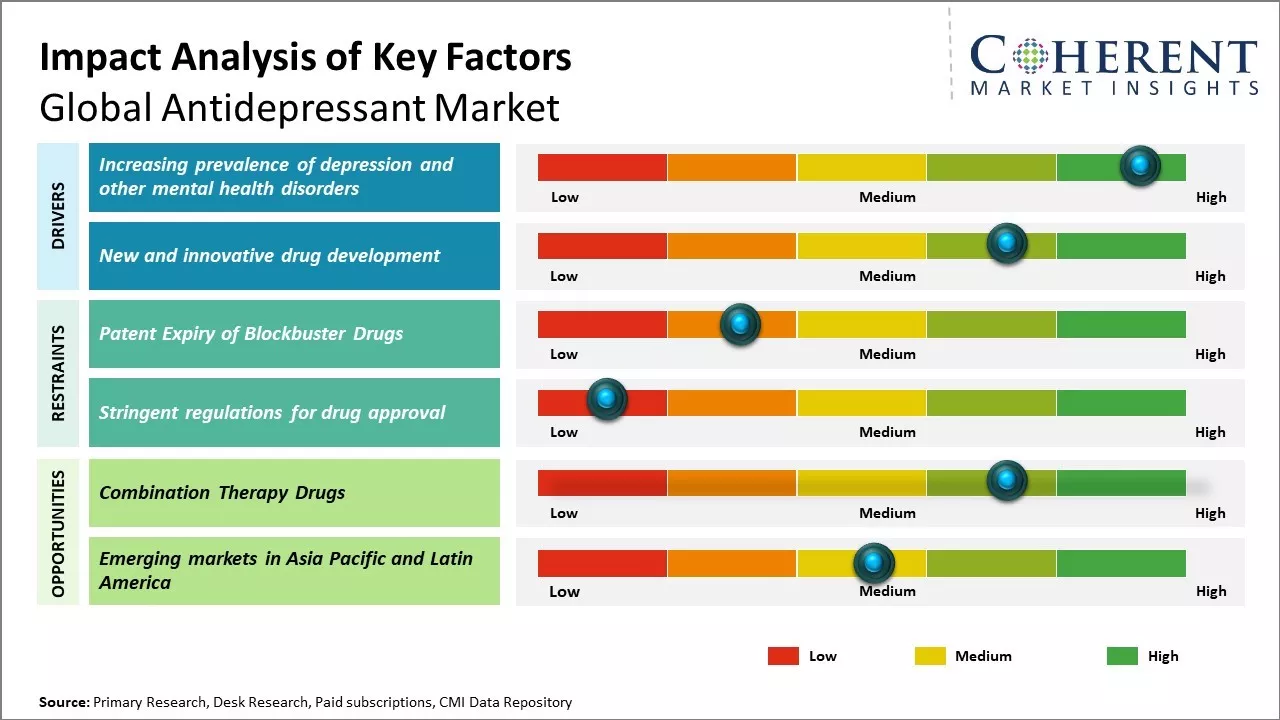The Global Antidepressant Market is estimated to be valued at USD 20.11 Bn in 2025 and is expected to reach USD 33.16 Bn by 2032, exhibiting a compound annual growth rate (CAGR) of 7.4% from 2025 to 2032. Widespread prevalence of depression and other mood disorders globally is driving the need for effective antidepressant medications. Moreover, growing geriatric population that is more susceptible to mental health issues is also fueling the demand for antidepressants.

To learn more about this report, Request sample copy
Factors such as rising awareness about depression treatment options and reduced stigma around mental illnesses are contributing to the market expansion. Additionally, the development of novel drug delivery systems and combination therapies to improve medication adherence and clinical outcomes provide lucrative opportunities for market players. However, patent expiries of blockbuster drugs may restrict market growth to some extent.
Increasing prevalence of depression and other mental health disorders
The increasing prevalence of depression and mental health disorders worldwide is a major factor fueling the growth of the global antidepressant market. As per recent data from the World Health Organization (WHO), over 300 million people across the globe suffer from depression. This makes depression one of the leading causes of disability worldwide. Several real-world factors like stress, socio-economic troubles, relationship issues, substance abuse and lack of community support have contributed to this alarming rise in mental health conditions. The COVID-19 pandemic has further exacerbated the mental health crisis globally. Countries saw unprecedented nationwide lockdowns and social restrictions which took an immense psychological toll on billions of people already struggling with their mental well-being. WHO data from June 2021 reveals that global prevalence of anxiety and depression increased by over 25% during the first year of the pandemic alone. With growing psychological after-effects still being reported, the long-term impact of COVID-19 on mental health disorders is likely to persist over the coming years as well. This constant rise in rates of depression, anxiety, bipolar disorder and other mood disorders has directly fueled the demand for antidepressant medications for effective management of these conditions. Popular antidepressants like SSRIs (Selective Serotonin Reuptake Inhibitors) and SNRIs (Serotonin-Norepinephrine Reuptake Inhibitors) feature among the top selling drug classes worldwide. According to a WHO report, over 15 million people in the United States filled prescriptions for antidepressants from March 2020 to March 2021, highlighting extensive reliance on pharmacological treatment for mood disorders.
Joining thousands of companies around the world committed to making the Excellent Business Solutions.
View All Our Clients